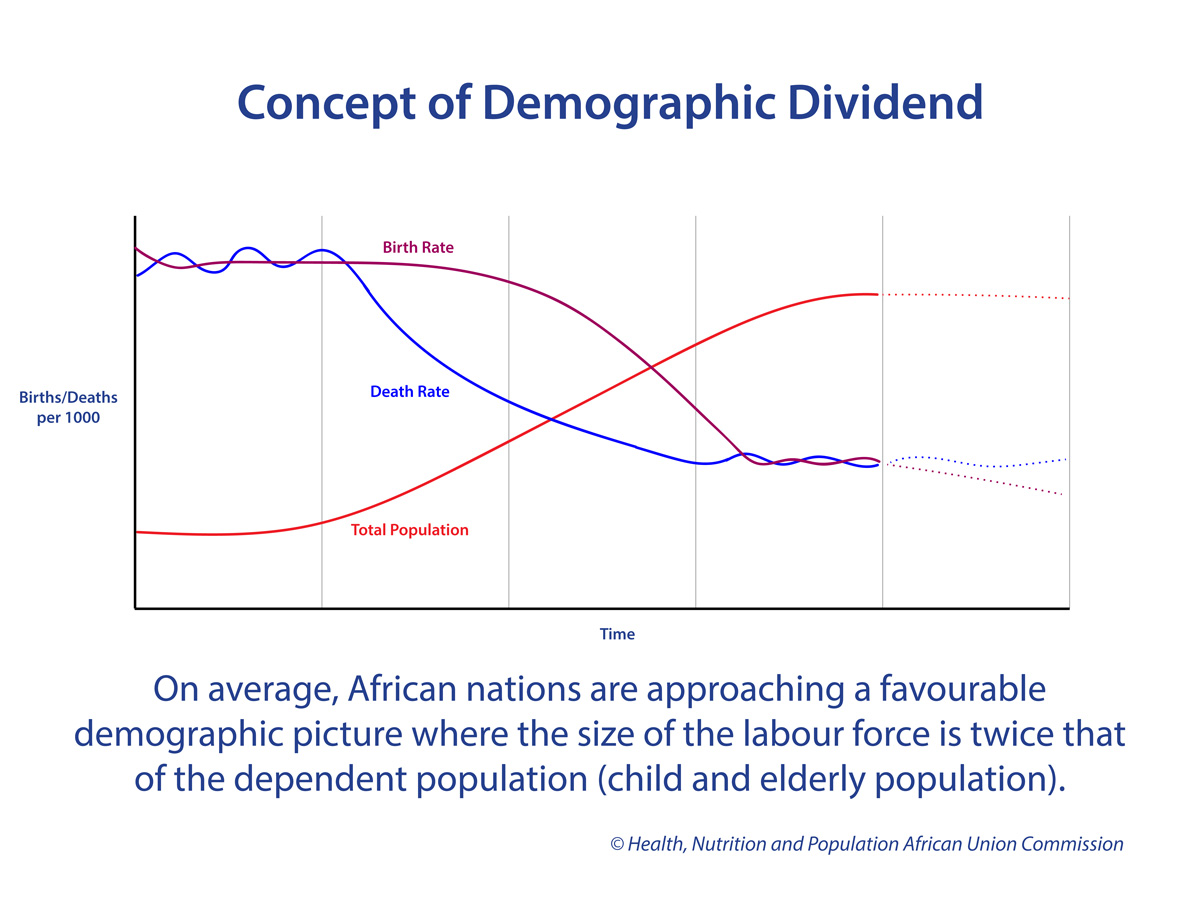Africa is the world’s most youthful continent. Today, nearly 50 percent of Africans are under the age of 15 (AAI, 2015). Africa’s young people are our future leaders and will be the driving force behind sustainable growth across the continent. Investment in education and training is essential in building an educated and skilled workforce and to encourage innovation.
The role of education in ensuring the youth bulge is equipped with relevant technical, leadership and entrepreneurial skills cannot be over-emphasised. With fewer births each year, a country’s young dependent population grows smaller in relation to the working-age population. With fewer people to support, a country has a window of opportunity for rapid economic growth if the right social and economic policies developed and investments made.
The demographic dividend is the accelerated economic growth that may result from a decline in a country’s mortality and fertility and the subsequent change in the age structure of the population. (Population Reference Bureau, 2017).

Here are a few facts about Africa’s population:
- The population of sub-Sahara Africa has grown from 186 million to 856 million people from 1950-2010. That’s about 11 million people a year for the past 60 years or approximately 670 million people in 60 years. By 2060, the population of sub-Sahara Africa could be as large as 2.7 billion people. Compare this demographic shift to Europe’s projection of a declining population—from 738 million people in 2010 to 702 million in 2060.
- Nigeria, Ethiopia, Tanzania, DRC, Niger, Zambia, and Uganda will contribute millions of people to the world total. Along with China and India, these countries will have the largest populations in the world. By 2050, Nigeria is projected to outpace the population of the United States by about 30 million people
- These staggering numbers are the results of decades of change in childbearing and mortality patterns. Until recently, on average a woman in sub-Sahara Africa had 6.5 children over her lifetime. Now women have 5.1 children on average, but this average masks considerable heterogeneity; in countries like Botswana, South Africa and Kenya women have fewer children, but in countries like Niger or among less educated rural poor women, the change is minimal, if any.
- Deaths, especially those of children, are increasingly being reduced. Infant mortality rates have declined from 183/1000 children born in 1950-55 to 69/1000 children born in 2010-2015. As a result, life expectancy has increased from 36 years in 1950-55 to 56 years at present.
- Policies and public actions matter to population growth. The large variations in population across countries are caused by factors such as levels of education, poverty, urbanization, access to health care including family planning methods and attitudes towards population growth. These factors help to explain why, for example, Niger’s population is growing at 3% per annum while Botswana’s population is growing at 1% per annum. Women have fewer children when they marry later, start families later and use modern methods of family planning. Childhood deaths have been reduced in countries with better access to immunization, health care, nutrition, education and transport.
- The population structure of countries is shaped by birth and mortality rates. Today, most countries are primarily made up of children aged 14 years and under.
- Countries that have managed to reduce both mortality and fertility rates increasingly find that the bulk of their population now consists of working age people and young adults. Still, Niger, Uganda and Chad all have populations with median ages below 16 years. Of the world’s top ten countries with the youngest populations, eight are in sub-Sahara Africa. By 2050, the region will be home to all 10.
For the optimist, these demographic shifts are exciting; for the pessimist, the numbers are daunting as they reflect pressure on existing facilities and can as well trigger civil unrest if no measures are in place to curb unemployment. What kind of future will greet another billion people in the region?
It depends on the policies that governments embark on to ensure quality education, affordable and quality health care, clean water and adequate sanitation, etc. A temporary window in time with the potential to rapidly improve the economic wellbeing of a country opens up as workers outnumber dependents (both old people and children). Organizations such as Higherlife Foundation need to be catalysts in optimising the benefits of demographic dividend through aggressively supporting leadership development and entrepreneurship.


